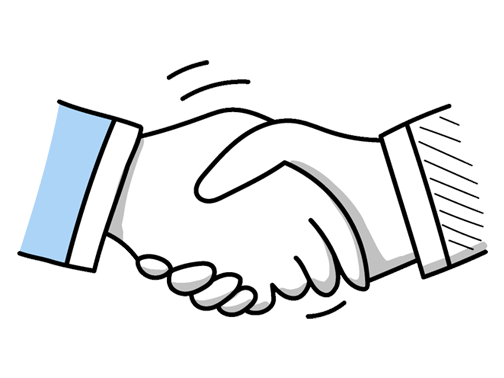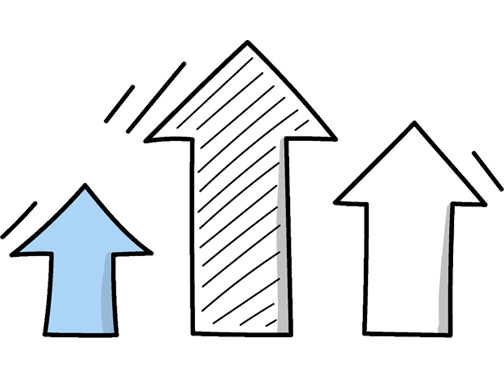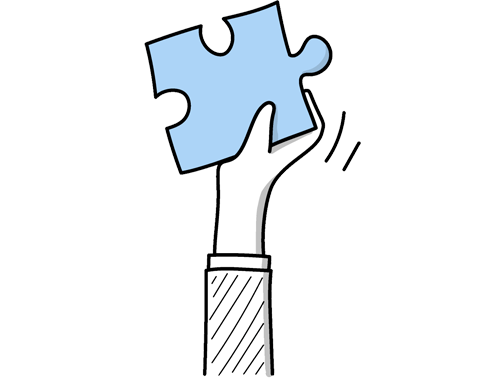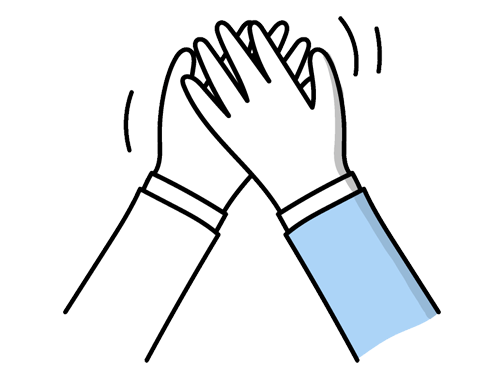Sheet Metal Engineer Interview Questions (2025 Guide)
Find out common Sheet Metal Engineer questions, how to answer, and tips for your next job interview
Practice Interviews Online - Identify your strengths and weakness in a realistic Sheet Metal Engineer mock interview, under 10 minutes
Practice Now »Sheet Metal Engineer Interview Questions
This question helps the interviewer understand your problem-solving skills and technical expertise in handling difficult projects. In your answer, clearly describe the specific challenge you faced, explain the practical steps you took to resolve it, and share the positive results and lessons learned.
Example: One of the toughest projects involved creating a complex curved panel with tight tolerances. The main challenge was preventing distortion during forming. I tackled this by adjusting the bending sequence and using progressive dies to control stress points. Collaboration with the design team also helped refine the specifications. In the end, we achieved excellent fit and finish, which reinforced the importance of flexibility and close teamwork in sheet metal work.
What they want to know is if you are proactive about learning and applying new developments in sheet metal engineering to stay effective and innovative. You should say that you regularly read industry publications, attend relevant workshops or conferences, and apply the latest techniques to improve your work.
Example: I make a point of regularly reading industry journals and following key manufacturers for new techniques. Attending workshops and webinars helps me stay sharp, and I often bring fresh ideas back to the team to improve our processes. Recently, learning about new CNC bending methods allowed us to reduce material waste on a project, which was a great example of applying what I’ve picked up.
What they want to understand is how you maintain clear, consistent communication and teamwork to keep the project on track. You need to say you use regular meetings, active listening, and open feedback to ensure everyone is aligned and any issues are promptly addressed.
Example: To keep things running smoothly, I make it a point to check in regularly with the team, whether that’s quick chats or informal catch-ups. Clear, open dialogue helps everyone stay aligned and spot any issues early. For example, on a recent project, we held brief daily stand-ups which really helped us tackle challenges before they escalated and kept the workflow steady.
This interview question aims to assess your hands-on experience and ability to oversee a project through all phases, showing your organizational and problem-solving skills. You need to clearly describe specific projects you managed, highlighting your role in planning, fabrication, and final delivery.
Example: I've overseen a variety of projects, from designing custom enclosures for electronics to fabricating structural components for automotive prototypes. One memorable project involved managing the entire process of producing ventilation panels, coordinating between design, material sourcing, and finishing to meet both aesthetic and functional requirements. Seeing a project through from initial concept to final inspection gives me a great sense of accomplishment.
What they want to know is that you prioritize safety and take proactive steps to prevent accidents. You need to explain a specific situation where you spotted a hazard and clearly describe the actions you took to fix it and ensure a safer work environment.
Example: In a previous role, I noticed loose metal shards accumulating near a press brake station, which posed a cut risk. I promptly organised a clean-up routine and introduced protective barriers to contain debris. This small change significantly reduced minor injuries and improved overall safety awareness on the floor. It felt rewarding to create a safer environment through simple, practical steps.
What they want to know is how you logically break down complex issues to find practical, effective solutions in your work. You need to say that you first analyze the root cause by reviewing design constraints and materials, then develop and assess alternative solutions before implementing and testing the best option to ensure it works.
Example: When tackling a tricky issue in sheet metal design, I start by carefully understanding what’s causing the problem, often by reviewing drawings or consulting the team. Then, I explore different ways to fix it, weighing what’s practical and cost-effective. Once I pick the best option, I put it into practice and double-check that it actually resolves the issue. For example, adjusting bend allowances helped us avoid fitment problems on a recent project.
Questions like this assess your ability to think rapidly and apply technical knowledge under pressure. You need to describe the problem briefly, explain your quick decision, and highlight the positive outcome of your action.
Example: During a project, we discovered a thickness inconsistency in the metal sheets just before production. I quickly assessed alternative suppliers and adjusted the cutting parameters to accommodate the variation. This allowed us to keep the timeline on track without compromising quality. It was a reminder that staying calm and adaptable can turn unexpected issues into manageable challenges.
What they want to understand is how well you collaborate across teams to ensure project success, especially since sheet metal projects often require coordination with design, production, and quality departments. You need to explain a specific example where you communicated effectively and contributed to meeting project goals through teamwork.
Example: In a recent project, I collaborated closely with design and production teams to develop a complex sheet metal enclosure. Regular meetings helped us align on specifications and address fabrication challenges early. This teamwork ensured the design was practical to manufacture, reducing errors and lead times. It was rewarding to see how clear communication between departments made the process smoother and the final product meet all requirements.
Interviewers ask this to gauge your hands-on experience and technical knowledge of sheet metal fabrication methods. You need to clearly name the processes you’ve used, explain the projects or products involved, and show awareness of how material properties influenced your choices.
Example: In my experience, I’ve worked extensively with cutting methods like laser and plasma cutting, as well as bending and forming techniques. For example, on a recent project, I used press brakes to shape stainless steel panels, considering material thickness and flexibility to avoid cracks. Understanding how different metals behave during fabrication helps me choose the right process to ensure precision and durability in the final product.
What they want to know is if you are proficient with the key software used in sheet metal design and can produce accurate, detailed models efficiently. You should mention your experience with industry-standard tools like AutoCAD for 2D layouts and CAD programs for creating precise flat patterns, highlighting how these tools help improve accuracy and collaboration.
Example: In my experience, I primarily use SolidWorks and Autodesk Inventor for designing sheet metal components. Both tools offer powerful features for creating precise folds and bends while allowing easy adjustments. I find that using these programs helps streamline collaboration across teams, especially when sharing models and drawings. Occasionally, I use software like AutoCAD for 2D layouts, which complements 3D designs nicely.
Questions like this assess your understanding of the materials you'll work with and your ability to make informed engineering decisions. In your answer, clearly describe key sheet metals like mild steel, stainless steel, aluminum, and copper, and explain why each is chosen for specific applications based on their properties and trade-offs.
Example: Sure. Common sheet metals include mild steel, valued for its strength and weldability, making it ideal for structural parts; aluminium, which is lightweight and corrosion-resistant, perfect for aerospace and automotive components; and stainless steel, known for durability and resistance to rust, often used in food processing or medical equipment. Selecting the right material depends on factors like strength requirements, environmental exposure, and cost, ensuring the final product performs effectively in its intended setting.
This interview question aims to see how you apply innovative thinking to practical problems in sheet metal work. In your answer, briefly describe the issue, the creative solution you devised, and the successful outcome it achieved.
Example: In a recent project, we faced a challenge where a complex bend caused material cracking. Instead of reworking the design entirely, I experimented with adjusting the bend radius and introduced a relief cut, which allowed the sheet metal to flex without failing. This saved time and material, showing how a small design tweak can resolve what seems to be a bigger issue.
Questions like this assess your ability to innovate and improve processes in your role as a sheet metal engineer. You need to clearly explain the new fabrication technique you introduced, why it was chosen, how you implemented it, and the positive results it achieved.
Example: In a recent project, I introduced laser cutting to replace traditional stamping for complex parts. This method was chosen for its precision and flexibility. I worked closely with the production team to adapt the workflow and troubleshoot initial issues, like alignment errors. As a result, we reduced material waste by 15% and shortened turnaround times, which improved both quality and overall efficiency on the shop floor.
Hiring managers ask this question to see if you can maintain professionalism, communicate effectively, and collaborate under pressure. You need to say that you stay calm, listen to all viewpoints carefully, and work with the team to find practical compromises that resolve the conflict.
Example: When conflicts arise, I focus on staying composed and hearing everyone out to fully understand their views. I find it helps to encourage open dialogue and look for common ground that benefits the project. For example, on a recent job, by acknowledging different concerns and suggesting a compromise, we kept the workflow smooth and maintained a positive team atmosphere.
Employers ask this to see how you stay adaptable and problem-solve under pressure. You need to say you assess the impact quickly, communicate with your team, and adjust the plan while maintaining quality and safety.
Example: When unexpected challenges arise, I stay calm and assess the situation quickly to understand the impact on design and timeline. For example, if a material behaves differently than anticipated, I collaborate with the team to adapt the approach, whether tweaking the design or adjusting processes. Keeping communication open ensures everyone stays aligned, and solutions are practical without compromising quality or safety.
Employers ask this question to see how you approach problem-solving and handle technical challenges under pressure. You need to clearly explain how you diagnosed the problem, the specific actions you took to fix it, and what positive results or lessons came from the experience.
Example: In a recent project, we faced inconsistent bends in a stainless steel panel. I noticed the issue stemmed from incorrect press brake settings, so I recalibrated the machine and tested samples until the bends met specs. This experience reinforced the importance of double-checking setup parameters before production, saving time and material while ensuring quality. It was a good reminder that small adjustments can prevent bigger issues down the line.
Hiring managers ask this to see if you can keep a team focused and productive by fostering clear communication and collaboration. You need to say that you regularly clarify goals with the team, address conflicts quickly through open dialogue, and organize meetings to monitor progress and keep everyone on track.
Example: To keep everyone on the same page, I focus on clear, regular communication so goals are understood from the start. I encourage team members to voice concerns early, which helps avoid misunderstandings. Tracking progress together also plays a big part—whether it’s quick stand-ups or check-ins—to make sure we’re moving in the right direction. For example, on a recent project, this approach helped us meet tight deadlines without any last-minute surprises.
This question helps interviewers understand how you maintain high standards and prevent errors in your work. You need to say that you carefully follow detailed measurements and specifications, use precise tools, and double-check your work to ensure accuracy.
Example: To ensure precision in sheet metal work, I rely on careful measurement and thorough planning before starting any project. Using calibrated tools and double-checking dimensions helps catch errors early. I also make it a point to review drawings closely and communicate with the design team when something’s unclear. For example, on a recent job, catching a small tolerance issue early saved time and prevented costly rework.
Hiring managers ask this to see how you proactively prevent problems and ensure quality in your projects. You need to say that you carefully review specifications and drawings for errors, identify risks early, and apply adjustments or monitoring to reduce defects throughout the process.
Example: When starting a sheet metal project, I study the drawings carefully to understand every detail. I look out for areas that might cause problems down the line, like tight bends or material stress points. To avoid issues, I put checks in place early and keep an eye on progress throughout. For example, on a recent job, catching a potential fit problem before fabrication saved time and cost.
Employers ask this to ensure you prioritize safety and keep up with industry standards that protect workers and maintain compliance. You need to say that you regularly review industry publications, attend training sessions, and follow updates from relevant regulatory bodies to stay current with safety regulations.
Example: I keep up to date by regularly checking industry websites and government updates, like those from the HSE. I also attend local engineering meetups and webinars, where professionals share practical insights. Staying connected with peers helps me understand how changes affect day-to-day work. For example, when new welding standards came in recently, a colleague’s experience helped me adapt quickly and ensure our processes stayed compliant.
Employers ask this question to ensure you understand the critical safety measures in sheet metal engineering and can maintain a safe work environment. You need to mention any safety training or certifications you have, such as IOSH or NEBOSH, and explain how you apply safety protocols like risk assessments and careful handling of tools in your daily work.
Example: I’ve completed formal training on workplace safety that covers handling machinery and materials specific to sheet metal work. I’m well-versed in UK health and safety regulations and always ensure risk assessments are up to date. On site, I apply this by routinely checking equipment conditions and using proper protective gear, which helps prevent accidents and keeps the team safe throughout each project.
Employers ask this question to assess your teamwork skills and how you contribute to group success. You need to clearly describe a specific project, your role, and how your actions helped the team achieve its goals.
Example: In a recent project redesigning aluminium panels, our team collaborated closely to improve durability while reducing weight. I led the sheet metal detailing, ensuring precise specifications and manufacturability. By coordinating with designers and fabricators, we streamlined production, cutting errors and saving time. Seeing the final product perform well in testing was rewarding, and it reinforced how effective teamwork and clear communication drive quality outcomes.
Interviewers ask this question to see if you understand how to translate a 3D design into manufacturable parts with accurate dimensions. You need to explain that you consider material properties, bend allowances, and develop the model by unfolding or flattening the 3D geometry while ensuring precision for fabrication.
Example: Sure. When creating a flat pattern from a 3D model, I start by understanding the part’s geometry and material. Using CAD software, I unfold or unwrap the model’s surfaces to generate a layout suitable for cutting. It’s important to account for bend allowances and material thickness to ensure accuracy. For example, when designing a duct, adjusting these parameters helps the final piece fit perfectly after forming.
Interviewers ask this question to ensure you prioritize safety and comply with regulations in a high-risk environment. You should explain that you always follow health and safety laws like the Health and Safety at Work Act, consistently use appropriate PPE such as gloves and safety glasses, and perform risk assessments before beginning any task to identify and mitigate hazards.
Example: When working with sheet metal, I always start by assessing the area for potential hazards to ensure a safe environment. I consistently wear appropriate PPE like gloves and safety glasses to protect against sharp edges and flying debris. I follow all relevant safety guidelines closely and make sure machinery is properly maintained and used correctly. Staying alert and cautious helps prevent accidents and keeps the worksite safe for everyone.
Questions like this assess your understanding of key industry standards and your ability to apply them practically to ensure safety and quality. In your answer, mention specific UK standards you follow and describe how you perform regular inspections and address issues proactively to maintain compliance.
Example: In my work, I stay up to date with standards like BS EN and ISO relevant to sheet metal fabrication. I regularly review project specs and carry out thorough inspections to ensure everything aligns with safety and quality requirements. If any potential compliance issues arise, I address them early by collaborating with the team, which helps avoid delays and maintains high standards throughout the process.
Ace your next Sheet Metal Engineer interview with even more questions and answers
Common Interview Questions To Expect
The interviewer is looking for you to highlight your key skills, abilities, and qualities that make you a strong candidate for the position. Be sure to provide specific examples to support your strengths.
Example: I would say my biggest strengths are my attention to detail, problem-solving skills, and ability to work well under pressure. For example, in my previous role, I was able to identify and fix issues in the sheet metal design that saved the company time and money. I thrive in fast-paced environments and enjoy the challenge of finding solutions to complex problems.
The interviewer is looking for insight into your long-term aspirations and how they align with the company's goals. Be honest, specific, and show ambition.
Example: My career goal is to become a senior sheet metal engineer, leading projects and mentoring junior engineers. I want to continue developing my skills in new technologies and processes to stay at the forefront of the industry. Ultimately, I aim to make a significant impact in the field and contribute to the growth of the company.
Interviewers are looking for honesty, professionalism, and a positive attitude in your response. Be prepared to explain any reasons for leaving your previous job in a constructive manner.
Example: I left my last job because I was looking for new challenges and opportunities to grow in my career as a Sheet Metal Engineer. I felt that I had reached a plateau in my previous role and wanted to expand my skills and knowledge in a different work environment. I am excited about the possibility of bringing my expertise to your team and contributing to the success of your projects.
The interviewer is looking for examples of how you manage stress and stay focused under pressure. You can discuss your problem-solving skills, ability to prioritize tasks, or experience working effectively in high-pressure situations.
Example: I handle pressure by staying organized and prioritizing tasks effectively. I also rely on my problem-solving skills to tackle challenges as they arise. In my experience as a Sheet Metal Engineer, I have learned to work efficiently and stay focused even in high-pressure situations.
Interviewers are looking for honesty, accountability, problem-solving skills, and the ability to learn from mistakes. Different ways to answer include discussing a specific mistake, explaining how it was resolved, and reflecting on what was learned from the experience.
Example: Yes, I once made a mistake in measuring a piece of sheet metal for a project. I immediately notified my supervisor, and we were able to adjust the measurements before any further work was done. From that experience, I learned the importance of double-checking measurements and always communicating any errors right away.
Company Research Tips
The company's official website is a goldmine of information. Look for details about the company's history, mission, vision, and values. Pay special attention to the 'About Us', 'Our Team', and 'News' or 'Blog' sections. These can provide insights into the company culture, recent achievements, and future plans. For a Sheet Metal Engineer role, also check if they have any specific projects or products related to sheet metal engineering.
Tip: Look for any unique or innovative projects the company has undertaken in the field of sheet metal engineering. Mention these during your interview to show your thorough research and interest in their work.
LinkedIn can provide valuable insights about the company and its employees. Look at the company's LinkedIn page for updates and news. Also, check the profiles of employees working in similar roles or the same department. This can give you an idea about the skills and experience the company values. For a Sheet Metal Engineer role, you might find information about the projects they have worked on and the technologies they use.
Tip: Connect with current or former employees if possible. They might provide valuable insights about the company culture and expectations.
Stay updated with the latest news and trends in the sheet metal engineering industry. This can help you understand the challenges and opportunities in the industry and how the company is positioned in the market. Look for news articles, industry reports, and research papers related to sheet metal engineering in the UK.
Tip: Mentioning a recent industry trend or news during your interview can show that you are well-informed and proactive.
Understanding the company's competitors can give you insights into its market position and strategy. Look for information about the competitors' products, services, and strategies. For a Sheet Metal Engineer role, understanding the competitive landscape can help you discuss how you can contribute to the company's success.
Tip: Use this information to discuss how you can help the company stay competitive. Be careful not to criticize the competitors excessively.
What to wear to an Sheet Metal Engineer interview
- Dark-colored business suit
- White or light-colored dress shirt
- Conservative tie
- Polished dress shoes
- Minimal jewelry
- Neat, professional hairstyle
- Clean, trimmed fingernails
- Light use of aftershave or perfume
- No visible tattoos or piercings
- Carry a briefcase or portfolio





